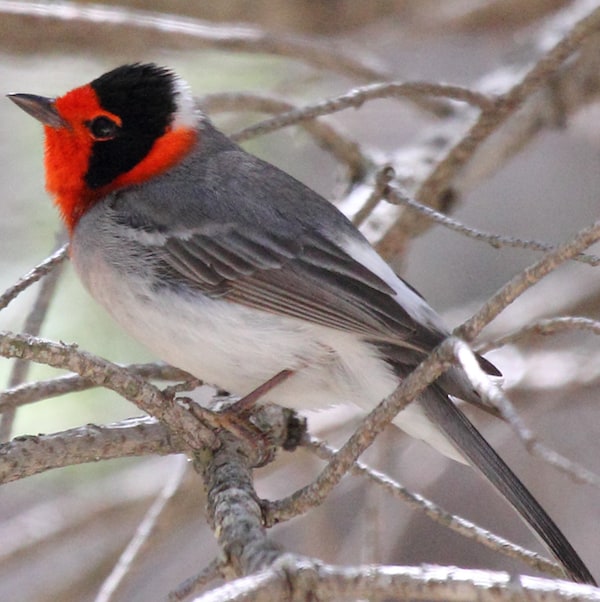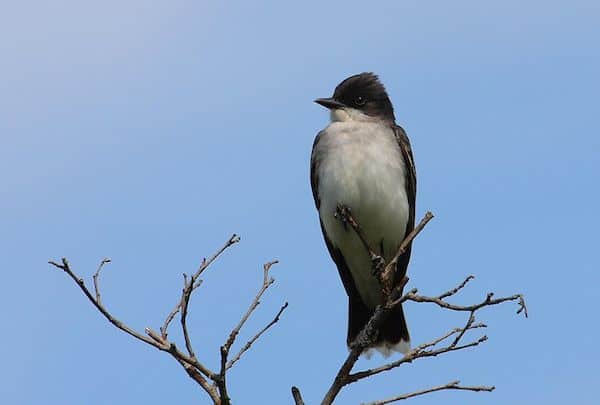Look For
The red-faced warbler is a small, colorful songbird of the mountains. Most distinctive is its bright red forehead, throat, and upper breast contrasted by the black on its crown running down the sides of its face. It also has gray upperparts and paler underparts with patches of white on its nape and rump.
Listen For
The red-faced warbler’s song is a rapid, warbling series of notes that rise and fall sporadically in pitch: Swee-swee-swee-wee-see-see-swee. Its call is a sharp, loud chip.
Find It
The red-faced warbler breeds in Mexico and areas around the U.S. border, stretching up into the mountainous forests of central Arizona and western New Mexico. It inhabits primarily pine-oak forests in high altitudes with elevations between 6,400 to 9,000 feet above sea level.
In winter it travels further down south in Central America into parts of El Salvador, Honduras, Guatemala, and the southern parts of Mexico. There, it lives in similar environments as it does in the summer, preferring high-altitude forests of pine, oak, and alder.
Feeding Behavior
The red-faced warbler feeds on a variety of insects, including leafhoppers and flies. Caterpillars are also an essential part of its diet and are fed in large quantities to its young. The red-faced warbler forages in dense trees, gleaning on outer branches and twigs. It also hovers and flies out to catch insects midair. During breeding season, males typically feed on higher branches than the females.
Nesting Behavior
The red-faced warbler builds its nest in a small hole in the ground, usually concealed at the base of a rock, tree trunk, shrub, or under a log. The female constructs an open cup shape using bark, leaves, and weeds, lined with fine grasses and hair. The female lays 3 to 4 eggs that are light pinkish-white with brown speckling.
The female incubates the eggs 13 to 15 days before hatching. Both parents feed the young, the labor sometimes divided with each adult caring for half of the brood each for 4 to 5 weeks.




